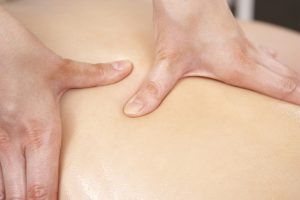Rubenfeld Synergy Method
 The Rubenfeld Synergy Method (RSM) is a healing technique that combines elements of bodywork with talk therapy. It is based on the concept of mind-body connection, which suggests that the mind and body interact to directly affect one’s health and well-being. RSM uses gentle touch, along with reflective listening, in order to release tension from the body, and, therefore, the mind.
The Rubenfeld Synergy Method (RSM) is a healing technique that combines elements of bodywork with talk therapy. It is based on the concept of mind-body connection, which suggests that the mind and body interact to directly affect one’s health and well-being. RSM uses gentle touch, along with reflective listening, in order to release tension from the body, and, therefore, the mind.
History of the Rubenfeld Synergy Method
RSM was developed by Ilana Rubenfeld. Rubenfeld graduated from the Julliard School of Music and worked as a conductor until she experienced a career-ending back injury. She sought treatment for her injury in the 1950s and began to learn about mind-body approaches to healing. She found that as she gained awareness of her body, her physical pain subsided. In the 1960s, Rubenfeld studied with psychologists and continued to formulate her method of healing. She was influenced by the work of Gestalt psychologist Fritz Perls and his concept of the present moment. In the 1970s, she used the term “Rubenfeld synergy” to emphasize the integration of touch and talk. Rubenfeld began teaching her healing method to others, and in 1977 the first official Rubenfeld Synergy training program started.
Process of the Rubenfeld Synergy Method
RSM is based on the idea that the body houses one’s thoughts, feelings, and spirit. Over the course of life, repressed emotions and stress are stored in the body, often showing up as pain or tension. RSM practitioners strive to help participants develop a positive relationship with their bodies, so they can release tension that is negatively affecting health and well-being. In this way, RSM aims to increase awareness of how the mind and body are connected.
In a typical session, the participant sits or lies comfortably. The practitioner begins the session by encouraging the participant to simply notice what they are thinking and feeling. The practitioner then gently touches the body, while the participant shares what he or she is experiencing at each point of contact. This treatment may occur on a weekly basis, lasting as long as necessary to address the issues for which the individual is seeking treatment.
Who Practices the Rubenfeld Synergy Method?
Practitioners of this method often have training and experience in some type of somatic work, and may include acupuncturists, dancers, massage therapists, and chiropractors. Some practitioners may also have a background in psychology, while others may not have any previous experience with healing techniques or therapy. RSM practitioners, known as Syngergists, are trained to work somatically while simultaneously processing emotions. Practitioners of this technique complete a training program through the Rubenfeld Synergy Training Institute and are then certified by the International Association of Rubenfeld Synergists (INARS).
What Conditions Are Treated with the Rubenfeld Synergy Method?
This technique is used to treat both physical and emotional issues, including stress, pain, and trauma. Practitioners of this method also use it to increase one’s sense of inner peace, improve self-esteem, and increase body-mind awareness and acceptance.
Effectiveness of the Rubenfeld Synergy Method
Although there is research that supports the use of both touch and talk in healing, there is very limited research on the effectiveness of RSM specifically. A study by Pettinati (2002) found that RSM can be helpful for treating chronic pain. However, the study was only a pilot study, the results of which were not replicated. Therefore, results should be interpreted cautiously.
References:
- Clark, C.C. (1999). Encyclopedia of complementary health practice. New York: Springer Publishing Company.
- Forman, S. (1998). The Rubenfeld Synergy Method addresses mind, body and spirit. Massage Magazine. Retrieved from http://www.rubenfeldsynergy.com/02rsm_3article01.pdf
- Pettinati, P.M. (2002). The relative efficacy of various complementary modalities in the lives of patients with chronic pain: A pilot study. United States Association for Body Psychotherapy Journal, 1, 6-15. Retrieved from http://www.befriendyourbody.org/02rsm_3article03.pdf
- Rubenfeld synergy method. (n.d.). Retrieved from http://www.rubenfeldsynergy.com/aboutRSM/aboutRSM.html
Last Updated: 04-14-2016
Sorry, the comment form is closed at this time.

